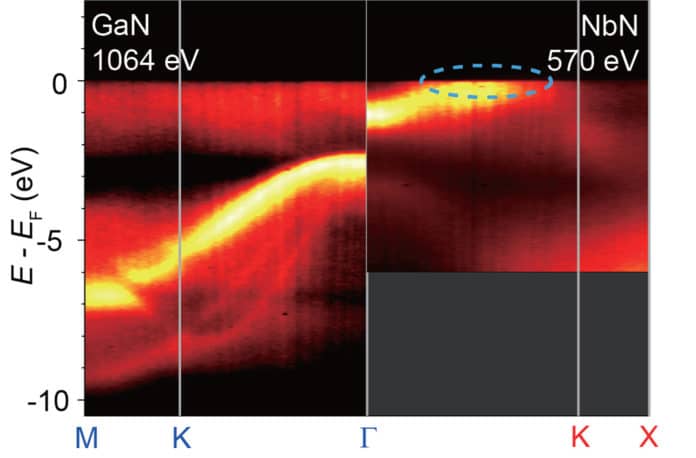Existing challenges in semiconductor electronics include further improvements that would increase the bandwidth of data transmission, energy efficiency, and information security. Quantum effects in semiconductors could give superconductors a new twist.
A team of scientists from Paul Scherrer Institute PSI and Cornell University in New York State has identified a composite material that could integrate quantum devices into semiconductor technology. Integration of this composite material could make electronic components significantly more powerful.
The fact that quantum effects in superconductors can be utilized has already been demonstrated in the first quantum computers. To find possible successors for today’s semiconductor electronics, scientists are investigating so-called heterojunctions, i.e., structures made of two different types of materials.
John Wright, who produced the heterojunctions for the new study at Cornell University, said, “It has been known for some time that you have to select materials with very similar crystal structures for this so that there is no tension in the crystal lattice at the contact surface.”
They found two suitable materials: the superconductor niobium nitride (NbN) and the semiconductor gallium nitride (GaN).
The latter plays a significant role in semiconductor electronics. Hence, it is well researched. Although, the behavior of electrons was elusive at the contact interface of these two materials. Plus, it was unclear whether it is possible that the electrons from the semiconductor interfere with the superconductivity and thus obliterate the quantum effects.
In this study, scientists found that the electrons in both materials “keep to themselves.” No unwanted interaction that could potentially spoil the quantum effects takes place.
Using a method called angle-resolved photoelectron spectroscopy using soft X-rays – or SX-ARPES for short, scientists visualized the collective motion of the electrons in the material. The technique offers a kind of map whose spatial coordinates show the energy of the electrons in one direction and something like their velocity in the other; more precisely, their momentum.
Tianlun Yu, a postdoctoral researcher in Vladimir Strocov’s team, said, “In this representation, the electronic states show up as bright bands in the map. The crucial research result: at the material boundary between the niobium nitride NbN and the gallium nitride GaN, the respective “bands” are separated from each other. This tells the researchers that the electrons remain in their original material and do not interact with the electrons in the neighboring material.”
Vladimir Strocov, a researcher at the Synchrotron Light Source SLS at PSI, said, “The most important conclusion for us is that the superconductivity in the niobium nitride remains undisturbed, even if this is placed atom by atom to match a layer of gallium nitride. With this, we were able to provide another piece of the puzzle that confirms: This layer system could lend itself to a new form of semiconductor electronics that embeds and exploits the quantum effects that happen in superconductors.”
Journal Reference:
- T. Yu, J. Wright, G. Khalsa et al. Momentum-resolved electronic structure and band offsets in an epitaxial NbN/GaN superconductor/semiconductor heterojunction. DOI: 10.1126/sciadv.abi5833
